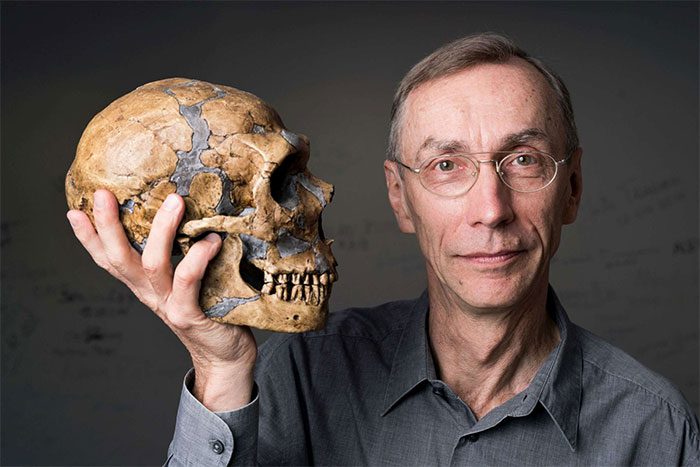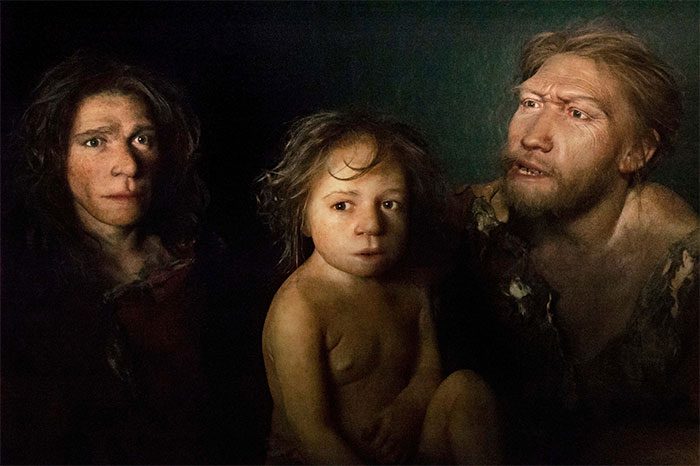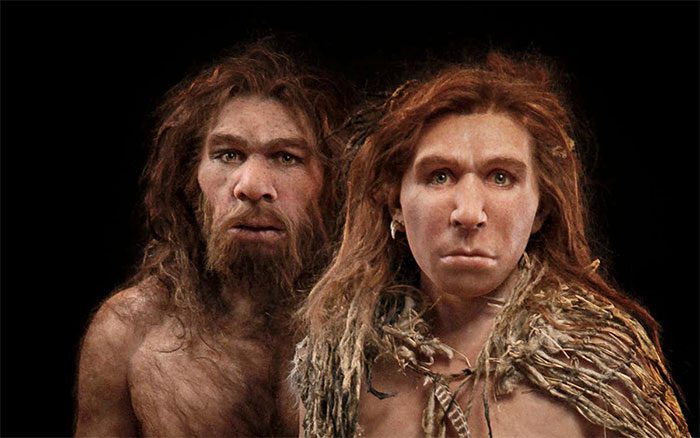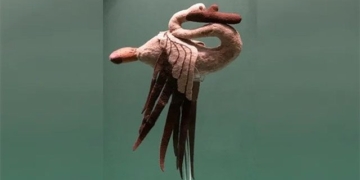You may have heard about the Neanderthals, an extinct group of ancient humans who lived alongside our ancestors in Europe and Asia. They had robust bodies and brains even larger than those of modern humans. They were capable of using tools, fire, and herbs. Some scientists believe they were intelligent enough to have their own language, art, and religion.
So why did such an intelligent species vanish from history around 30,000 years ago? Were they defeated by our ancestors? Or was it due to climate change or disease? Or perhaps they did not completely go extinct but instead interbred with our ancestors, becoming part of our gene pool?

Neanderthals were an extinct group of ancient humans who lived alongside our ancestors. (Illustration: ZME)
Who Were the Neanderthals?
The Neanderthals were a species or subspecies of early Homo sapiens, their name deriving from the first fossil discovered in the Neander Valley of Germany in 1856. Current research suggests that Neanderthals diverged from their ancestor Homo heidelbergensis about 430,000 years ago and began to spread throughout Europe, Western Asia, and North Africa. They were masters of adaptation to cold environments, characterized by their thick bone structure, short limbs, and large nasal cavities. Their brain volume was larger than that of modern humans—1,600 cubic centimeters for males and 1,300 cubic centimeters for females.
Neanderthals possessed advanced skills and culture, creating the Mousterian culture of the Paleolithic era. They could make fire, build shelters, craft clothing and tools, use herbs for healing, store food, and master various cooking techniques, among other abilities.
Their diet came from a variety of sources such as ungulates, plants, small mammals, birds, and aquatic animals. They were even skilled navigators and could have crossed the Mediterranean Sea.
Neanderthals also had artistic inclinations; they likely adorned themselves with bird feathers and shells, collected crystals and fossils, carved stones, and made musical instruments like flutes from bones. These artifacts have been found in prehistoric caves in Spain dating back 65,000 years, although this conclusion remains debated.
They may have had the capacity for language, and some believe they possessed their own religion. They buried their dead and sometimes placed flowers or food beside them. Their social structure may have been relatively egalitarian, lacking clear leaders or hierarchies. They also cared for one another, helping injured or disabled companions.

Neanderthals had artistic inclinations. (Illustration: ZME).
How Were Neanderthals Related to Our Ancestors?
The relationship between Neanderthals and our Homo sapiens ancestors was complex, involving competition, cooperation, and even interbreeding. Homo sapiens began to expand their range from Africa around 200,000 years ago and started to encounter Neanderthals. The two species may have clashed in some areas, competing for resources and territory. Homo sapiens may have had advantages due to better social organization, communication skills, and innovative thinking.
However, not all interactions between the two species were hostile, and in some areas, they may have coexisted peacefully or cooperated for mutual benefit. Neanderthals and our Homo sapiens ancestors may have exchanged tools, food, knowledge, and even mates. Some Neanderthals might have joined Homo sapiens groups or vice versa.
Perhaps the most surprising aspect is that interbreeding occurred between the two species, resulting in hybrid offspring. In 2010, the Neanderthal Genome Project published preliminary findings indicating that modern humans in Eurasia, excluding those of African descent, have 1% to 4% Neanderthal genes, while Africans have only 0.3%. This means that we share a common ancestor with Neanderthals and are closely related.

The relationship between Neanderthals and our Homo sapiens ancestors was complex. (Illustration: ZME).
Why Did Neanderthals Go Extinct?
Despite their intelligence and remarkable skills, Neanderthals eventually went extinct around 30,000 years ago. Scientists have proposed several hypotheses as to why they became extinct, including the following:
- Competitive replacement: Homo sapiens may have been better adapted to changing environments compared to Neanderthals, possessing superior social cooperation and innovative thinking, thereby gaining an advantage in competition and replacing Neanderthals.
- Hybrid assimilation: The interbreeding between Homo sapiens and Neanderthals led to the dilution and assimilation of Neanderthal genes, eventually resulting in their genes disappearing from the Homo sapiens gene pool.
- Climate change: Neanderthals evolved to adapt to cold environments, which made it difficult for them to cope with warming climates and droughts, leading to reduced food sources and shrinking habitats.
- Disease: Neanderthals may have contracted lethal diseases, such as tuberculosis and leprosy, possibly from Homo sapiens or animals.
- Small population size: The total population of Neanderthals remained low, making them vulnerable to disasters, diseases, inbreeding, and other factors.
Each of these hypotheses is supported by certain evidence but also faces issues and counterarguments. Currently, no single hypothesis fully explains the extinction of Neanderthals. Therefore, some scientists believe that the extinction of Neanderthals may be the result of a combination of multiple factors rather than a single cause.
What Legacy Did Neanderthals Leave Us?
Although Neanderthals went extinct, they left us with a valuable legacy. Their fossils, tools, artworks, and more serve as important evidence of human history and culture, allowing us to understand their lifestyles, thoughts, and creativity.
Furthermore, Neanderthal genes are still present in our bodies, influencing our physical and psychological traits. Research indicates that Neanderthal genes may affect our immune system, skin color, hair texture, smoking addiction, and more.
Neanderthal genes may also influence our psychology and behavior, such as mood, memory, and learning ability. Some studies have found that Neanderthal genes may be linked to psychological disorders like autism, depression, and attention deficit hyperactivity disorder. However, these studies are not exhaustive and require further evidence and analysis.
In summary, Neanderthals are our closest relatives and a crucial link to our understanding of ourselves and our past. They not only represent the diversity and complexity of human evolution but also reflect the origins and development of human civilization. They deserve our respect and remembrance.


















































